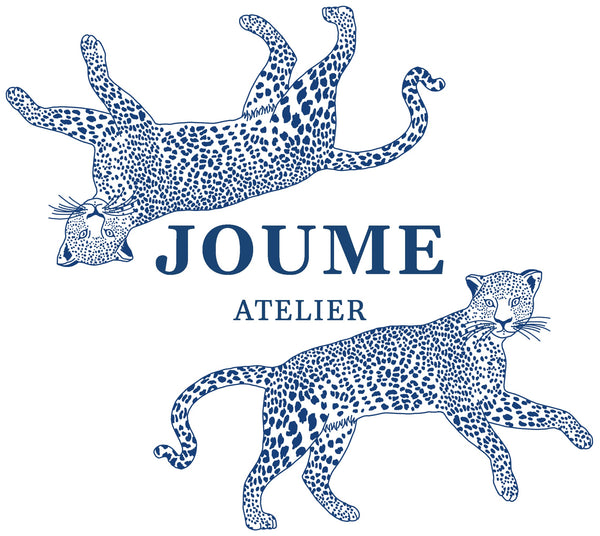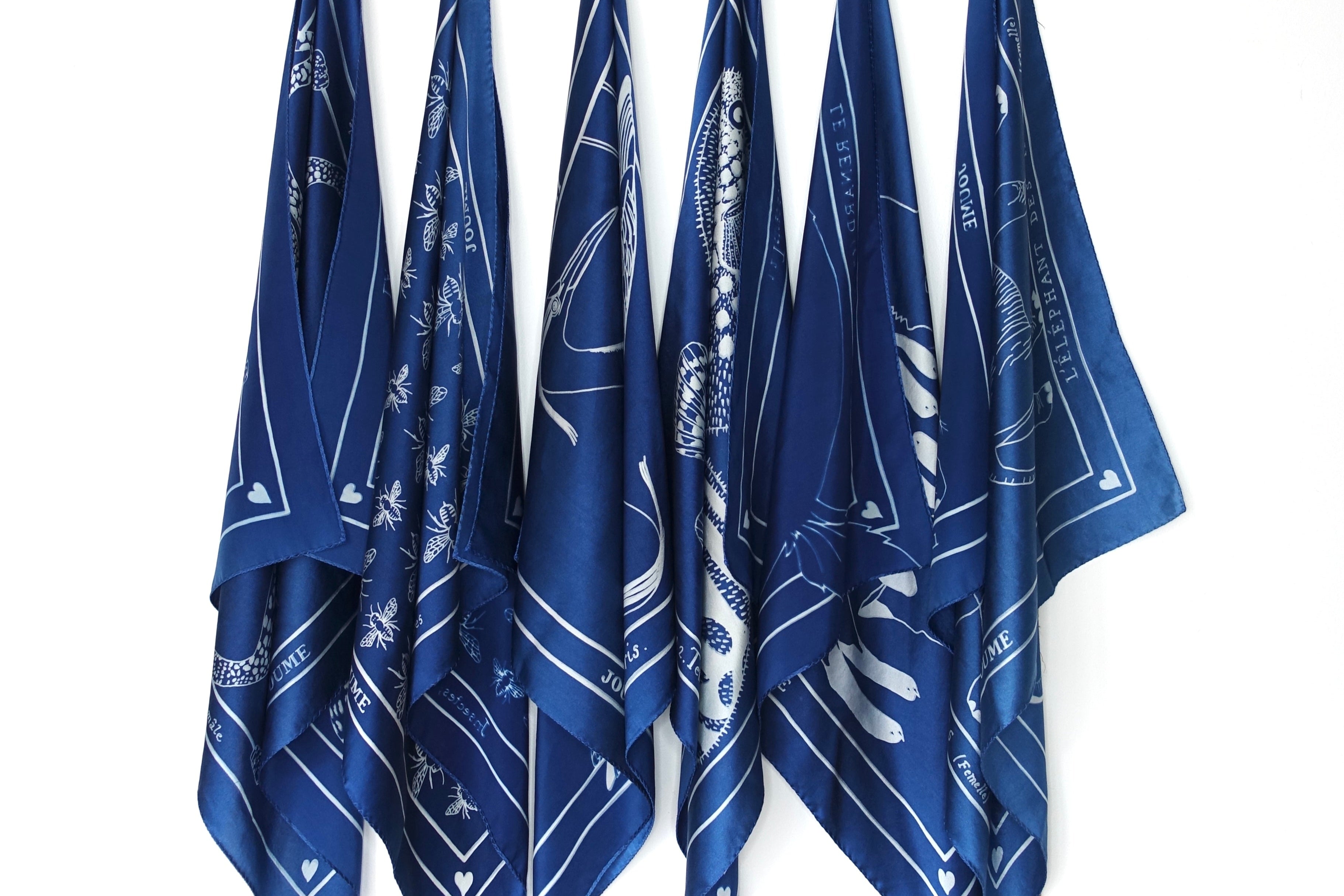SAVOIR-FAIRE
BETWEEN SCIENCE, ART, AND CRAFTSMANSHIP
Cyanotype is an old monochrome photographic process, recognizable by its unique color: Prussian Blue.
Invented in 1842 by the British scientist Sir John F.W. Herschel, it was initially used for botanical research by Anna Atkins (1799–1871) before being more recently introduced into the world of art.
JOUME scarves are dyed using this process, each acquiring a singular shade of blue.
Their creation takes three days, following a very specific choreography, yet the final result depends largely on one element: the sun. Indeed, variations in UV intensity and exposure time produce deeper or lighter blues, making every scarf a unique piece.
THE MANUFACTURING PROCESS

Two liquids are mixed to create a photosensitive solution: ammonium ferric citrate and potassium ferricyanide. Once applied to the fabric and dried, this solution takes on a yellow-green hue.
Next, a transparent plate, on which a hand-drawn design has been sketched, is placed on the dyed fabric. The entire assembly is then exposed to sunlight: under UV rays, the iron in the solution is reduced, changing color to a bronze-like tone. This exposure is done first on the front of the fabric, then on the reverse side.
It is during the rinsing stage that the blue color appears, with unexposed areas (the drawn motifs) remaining light. The depth of blue depends on the intensity of UV rays, exposure time, and other factors such as humidity, drying time, and fabric quality.
After 24 hours of rest, the fabric is washed and dried again. It is then carefully cut and ironed before receiving its finishing touches that enhance its beauty.
For any further information, please do not hesitate to contact us!

